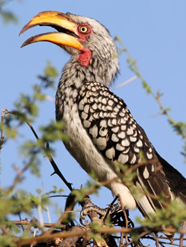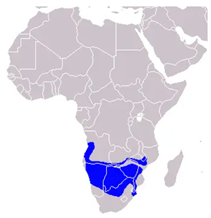Climate change victim: Kalahari bird
Context
The southern yellow-billed hornbill has not been able to breed properly and its numbers have declined subsequently.
About
- Climate change has been wreaking havoc on a number of species for quite some time now. Some have even gone extinct.
- It is now threatening a resident of the Kalahari Desert of southern Africa: The southern yellow-billed hornbill (Tockus leucomelas).
- A recent study has found that an increase in temperatures could see the hornbill disappear from parts of the Kalahari by 2027.
Key finding:
- In the Kalahari, air temperatures have already risen more than 2°C in a few decades. At this rate, by 2027, these birds will not breed at all at this site.
- Above a daily maximum temperature of 35.7 degrees Celsius (96.3 Fahrenheit), there were no successful breeding attempts among the hornbills.
- Comparing the first three seasons (2008-2011) of monitoring to the last three (2016-2019), the mean percentage of nest boxes occupied declined from 52% to 12%.
- Nest success, a breeding attempt successfully raising at least one chick fell from 58% to 17%.
- Fledglings produced per breeding attempt declined from 1.1 to 0.4.
About
- The bird is best known for its unusual breeding and nesting habits where the female seals herself in a cavity and stays there for about 50 days to brood and care for chicks.
- They feed on insects, spiders, and scorpions as well as seeds that they find on the ground.
- In appearance, the southern yellow-billed hornbill looks a lot like its sister species, the red-billed hornbill, Tockus erythrorhynchus.

Distribution:
- Continents: Africa
- Countries: South Africa, Angola, Botswana, Malawi, Mozambique, Namibia, Zambia, Zimbabwe
- Regions: Eswatini
- Biogeographical realms: Afrotropical

|
Kalahari Desert:
|





